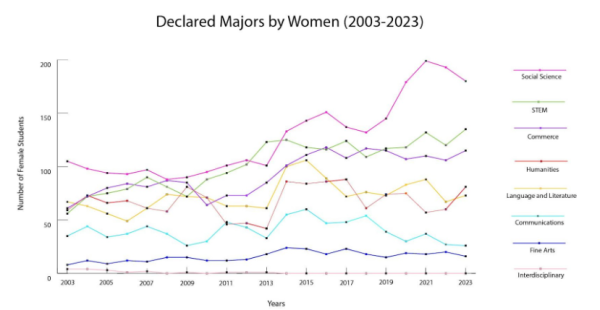Italian art history scholar discusses legacy of Saint Catherine of Siena
Dr. Anna Piperato identifies Saint Catherine’s strength as an important quality for women to emulate today
February 8, 2017
Anna Piperato, a tour guide for Rick Steve’s Europe, discussed Saint Catherine of Siena and her journey to Catholic Sainthood at Washington and Lee on Monday.
In her presentation titled, “The Many Faces of Saint Catherine of Siena,” Piperato explained that her love for Saint Catherine stems from Catherine’s determination to conduct her life without the interference of men and other authority figures. Her presentation came at a unique moment in women’s history, just a few days after the Women’s March on Washington.
Piperato was familiarized with W&L in 2015 when she worked with the spring term course, “Science of Cooking,” in Siena, Italy. She now works as a freelance translator and tour guide in Siena.
Piperato said Saint Catherine has achieved numerous titles in the realm of Sainthood since her death in 1380.
Saint Catherine is the co-patroness of Rome, co-patron saint of Italy, patron saint of Europe and patron saint of nurses, temptation, miscarriages and fire prevention. Piperato joked that her last title can be attributed to Catherine’s “burning passion” for Catholicism.
Piperato said Catherine decided to devote her life to the Christian faith, against her parents’ wishes, at age 8. Her parents wanted Catherine to be married off at an appropriate age like the rest of their daughters.
Catherine refused to change her mind after having a vision that she married Jesus in a ceremony attended by the Virgin Mary. Piperato said Catherine was sure Jesus Christ was the only man to whom she could promise herself.
Piperato said that only when Catherine cut her hair short so that no man would be interested in marrying her did Catherine’s parents accept her decision.
Catherine quickly gathered followers eager to witness or benefit from her healing powers. Piperato said that even with her rapidly growing reputation, Catherine did not have much control over her own life as a woman in the 14th century.
Instead, Catherine practiced “Holy Anorexia” where she consumed only the wafers and wine of the Eucharist in Holy Communion. Piperato said Catherine manipulated her body to give her autonomy in a society still overwhelmingly led by men.
Piperato said Catherine’s greatest accomplishment was her alleged role in bringing the Pope back to Rome.
Very few people, and even fewer women, were granted meetings with the Pope, but Catherine was persistent in her letters to him. Eventually he invited her to visit, and moved the papacy back to Rome after she begged him to.
Piperato ended her presentation with a quote from Saint Catherine, translated from Italian: “If you become that which you are meant to be, you will all of Italy aflame.”
In the polarized political climate of today’s world, she advised the members of her audience to do what is right and what they believe in to work toward setting the world aflame.
Dr. Piperato attended Skidmore College in Saratoga Springs, N.Y., where she received a degree in art history with a minor in studio art. She has since earned a masters in Italian studies and a PhD in art history at The University of Manchester in Manchester, England.












